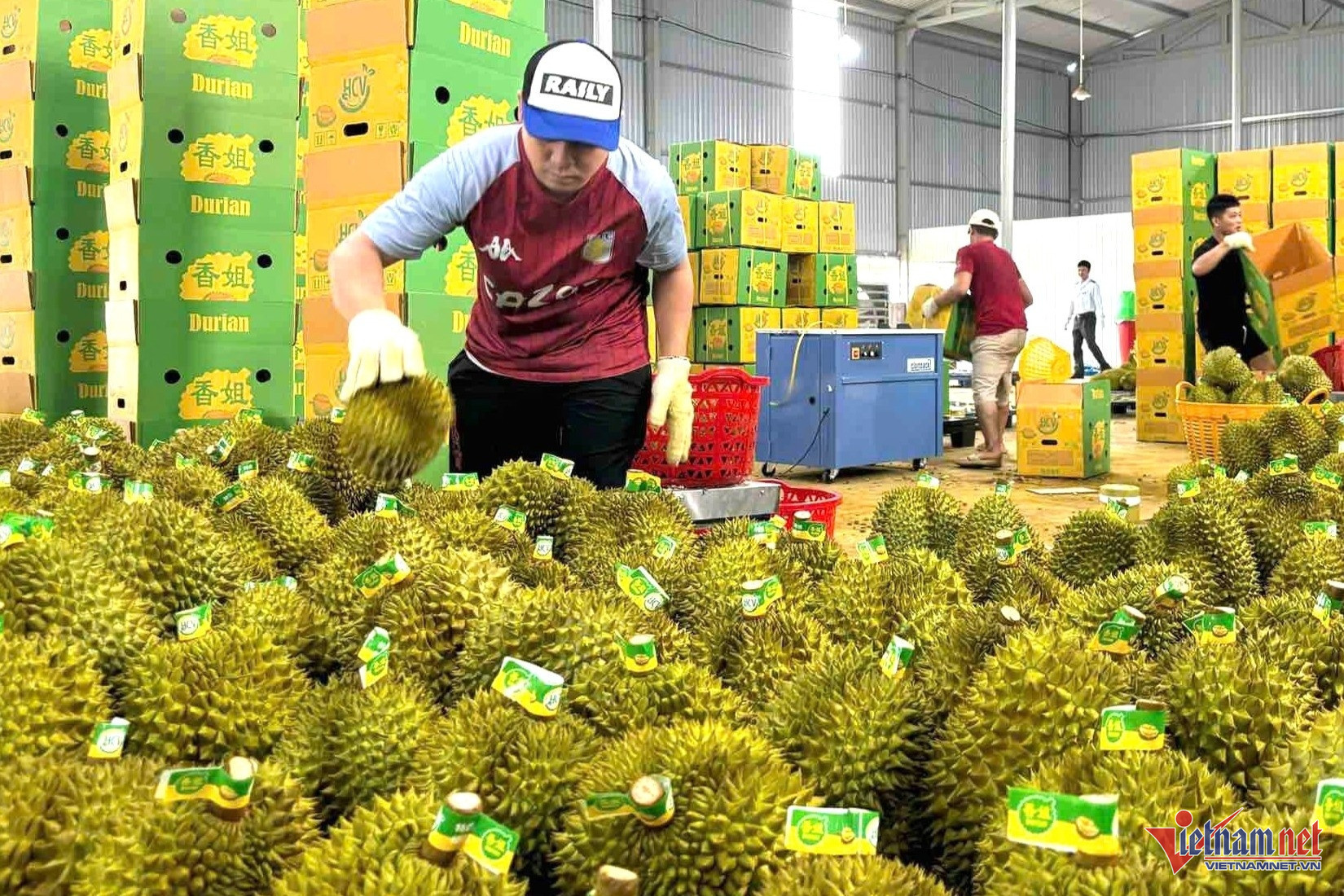The directive, sent to the Ministries of Agriculture and Environment; Industry and Trade; Finance; Public Security; and chairpersons of 24 provincial and municipal People’s Committees, highlights the recent challenges facing Vietnam’s durian exports.
These include tighter import regulations by some foreign markets, climate change impacts, and rapid, unregulated expansion of durian cultivation in certain areas - all threatening the sustainable development of the sector.
Preventing price crashes during harvest

To address these issues, the Prime Minister has tasked the Minister of Agriculture and Environment with steering durian production under the National Fruit Tree Development Plan through 2025 and 2030. This includes aligning supply with demand, meeting domestic and export market standards, and negotiating access to new international markets.
The Ministry is also required to review and improve regulations on the management and use of plantation codes and packing facilities, ensuring transparency and consistency with international practices. A sustainable durian production protocol must be finalized by Q3 2025.
The Ministry of Agriculture and Environment is further instructed to promote research and the application of new technologies, digitization in production and processing, quality control, and traceability - enhancing product quality, value-added potential, and global competitiveness.
Efforts should also be made to engage with China’s General Administration of Customs (GACC) to ensure mutual recognition of planting areas, packing facilities, and certified laboratories, and to streamline customs inspection procedures for durian exports to China.
Plant quarantine stations at border gates must be adequately staffed and equipped to handle peak harvest periods, while laboratory service capacities must be improved to support exports.
Additionally, the sector should be restructured by maintaining productive growing areas, phasing out less efficient ones, and expanding high-quality production. The focus should shift toward increasing exports of frozen and deeply processed durian products, helping stabilize prices during peak seasons.
A monitoring program must be developed immediately to supervise the issuance and management of plantation codes, packing facilities, food safety, and phytosanitary compliance from origin.
Strict punishment for fraud and violations
The Prime Minister assigned the Ministry of Industry and Trade to lead the branding initiative for Vietnamese durian and expand market access through trade promotion.
The Ministry of Finance must direct Customs to prioritize clearance of durian shipments for export, ensuring the fastest possible processing times.
The Ministry of Public Security has been tasked with investigating and strictly punishing fraudulent activities related to plantation and packing facility codes. This includes falsification of export documents and other legal violations in the production, processing, trade, and export of durian.
Security forces must also coordinate with ministries and localities to safeguard the supply chain, prevent market manipulation, and maintain stability in production and exports.
Local authorities in durian-growing provinces must ensure production follows all legal, technical, and regulatory guidelines. They must prevent unregulated expansion that could disrupt the national crop structure and market supply-demand balance.
In addition, they are responsible for conducting periodic and unannounced inspections to ensure all certified entities comply with regulations and meet the standards required by importing countries.
Provinces must also implement comprehensive food safety and traceability programs for durian to meet export market demands. Collaboration with specialized agencies and law enforcement should be enhanced to oversee the entire durian value chain - from cultivation and packaging to consumption and export. Internal monitoring systems should also be established at farms and packing facilities to ensure compliance with Vietnamese and international standards.
According to the Ministry of Agriculture and Environment, as of 2024, Vietnam’s durian cultivation area reached nearly 180,000 hectares, with an estimated yield of 1.5 million tons and export revenue approaching 3.2 billion USD. Durian now accounts for 47% of Vietnam’s total fruit and vegetable export value. From 2015 to 2024, durian acreage grew at an average annual rate of 19.5% and continues to expand rapidly.
Tam An